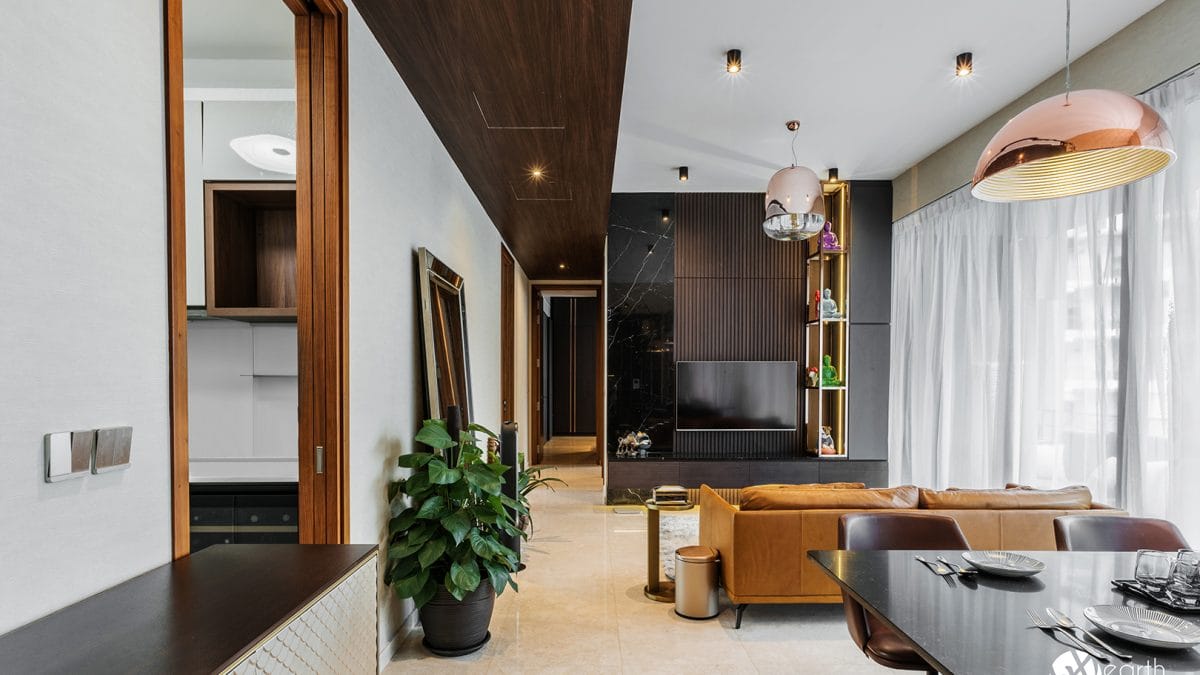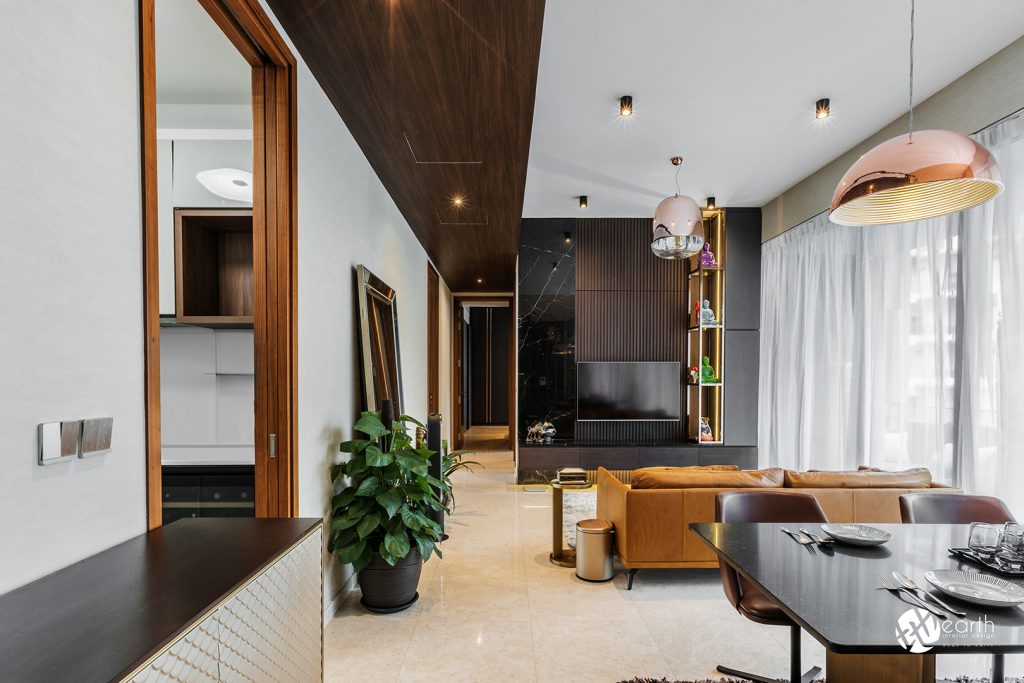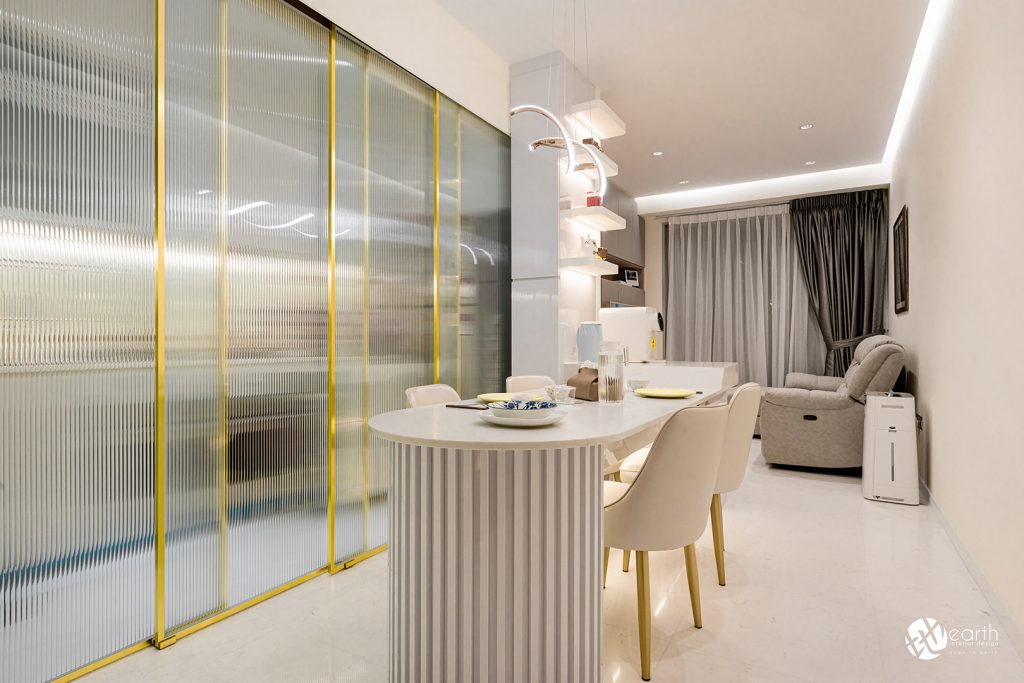The reality is there are actually a ton of factors that influence your health + well-being in your home. From everything we’ve listed above which mainly focuses on health as a safety aspect to mood influences + behavioral impacts, each has its own influence on the people living in your home.
Mood Influences: From color to both artificial and natural light, research reveals that how we feel, can be influenced by our home environment.
Color
Color is far beyond an aesthetic decision. In fact, the fascinating thing about color is that it’s such an incredibly powerful tool that sometimes, without even realizing it, color directly impacts our mood, our feelings + believe it or not *gasp!* it even contributes to some of our physical behaviors.
While there’s no one size fits all formula when it comes to color, another guideline to consider, is the overall size of your space. In general, the smaller the space the brighter the room should be and the larger the space the more room you have to explore with darker colors.
So often, when we begin discussing color, most of us immediately jump to + begin thinking about paint-color. And while paint is hugely important, it’s merely one way to introduce color in your home.
When it comes to color, at Elegant Simplicity, we’re all about timeless style that can live up to the wear + tear of everyday life. So, we tend to design a neutral backdrop + bring color in with intentionality and purpose. While we absolutely could paint an entire room a dark + saturated moody color, we also love to introduce colors in the form of furniture + other furnishings like rugs, throw blankets + accent pillows, decorative accessories, as well as artwork or even window drapery.
Light
Like color, light can set the mood of a room — hence why we often refer to it in a space as “mood lighting.” But like color, light can also create both positive + negative moods so it’s another important design element to consider. As a general thought — there are two types of lighting in each room…
Natural Light — fairly self-explanatory, natural light is the source of light available to you through the doors or windows of a home.
Having a lot of natural light is an excellent problem to have because you can utilize window drapery + window coverings to not only filter the amount of light into the room but to also control the overall mood of the space.
Natural light exudes a feeling of warmth + happiness but if not filtered adequately or in an aesthetically pleasing way it can be harsh + uncomfortable. Ugh, you know the feeling of sitting in a chair on a midsummer afternoon sweating bullets but trying to act like it doesn’t bother you *wink*
If a room has great natural light, that’s fantastic — but what if it doesn’t?
Artificial Light — a complementary source of light to what already exists in the space used with intentionality.
The last part of that definition, “used with intentionality” is really important because there are a few types of artificial lights to consider when choosing the best light for your space + a room without adequate lighting is uninviting.
- Task Lighting – sheds plenty of light in a specific area without brightening up an entire room
- Accent Lighting – is intended to accentuate (or act the) a focal point of your room
- Ambient Lighting – is the starting point of space. It makes us the base amount of light in a room. But if used sparingly can create the subtle “mood lighting” that gives you all the feels + creates ambiance.
The truth about lighting is that most well-designed rooms have a variety of light sources, both natural light as well as multiple types of artificial lighting. However, to get the lighting right, you really need to think about the activities that are going on in a room. For instance, if you’re designing a reading nook, well then, it’s safe to bet you’ll want a task-light to prevent eye strain. But, if you’re designing a hallway on the main floor of your home where guests will see — perhaps you’ll want to layer in an accent light.
Biophilic design
In fact, effective biophilic design in our homes creates spaces that emulate the restorative benefits nature offers us. From incorporating direct experiences of nature like plants, water, light, and other physical elements such as air to indirect experiences of things like imagery, natural materials, colors, and other elements that mimic or evoke nature.
The presence of biophilic benefits in research has shown that spaces created with biophilic elements, derived from the natural environment, lower anxiety, anger, frustration, and confusion – a haven for emotional restoration!
Be Conscientious Of Your Investment
From volitzation which is the off-gassing of typically wet materials into the air (most commonly paints, glues, etc) to abrasion which is a type of degradation were rubbing a material releases tiny harmful particles, designing a healthy home is all about being aware of the potential risks of the things you fill your home with.
Whether you’re building a home from the ground up, remodeling your kitchen or bathroom, or simply furnishing + styling, these things aren’t meant to scare you but they are real.
And bringing them up is our effort to help you to become more conscious of the implications of each + every design decision you make –– be it a new sofa you buy online or hardwood floors being installed in your home — What’s the overall impact of what you purchase on your health and well being?
Seek Out Transparency
Whether it’s advocating for or educating yourself about the ingredients used to create the things you love, seek out manufacturers, companies, and people who are willing to be as transparent as possible…
There’s a lot of uncertainty in the world we live in + in your quest to create the perfect home but list up my friend, because there’s neither no harm in asking nor any change demanded if we don’t.

Well, there you have it…everything you need to know about creating a healthy home! And don’t forget, if you’re in the preliminary planning stages of your next project, get your Free Quote here.






